The content of the article
- Description and characteristics of polyester fabric
- Fabric structure
- Properties and advantages
- Pros and Cons of Polyester Clothing
- Answers to frequently asked questions
- Polyester – stretches or not?
- Polyester fabric – breathing or not?
- How to remove stains on polyester fabric
- Photo: what the polyester fabric looks like
Polyester is in the composition of almost any clothing, but not everyone knows what kind of material it is. Under this name is a synthetic fabric made from polyester fibers that resembles wool in appearance, and cotton in terms of characteristic. Polyester sews women’s tights, jackets, raincoats, coats, underwear and even curtains, drapes. A few years ago no one heard about such a fabric, but now it is very popular..
Description and characteristics of polyester fabric
The tactile feel of polyester resembles cotton. This synthetic fiber is capable of maintaining its properties when heated to 40 degrees, so it is recommended to wash it in water no higher than this temperature. The fabric is characterized by a “cooling” effect, resistance to direct sunlight, which makes it indispensable in sunny weather..
Polyester is made of different types: glossy or matte, depending on its further purpose. This synthetic fabric is able to perfectly imitate the texture of natural fiber, which is why it is widely used when sewing pleated skirts, trouser suits and other fashionable clothes. It has the following characteristics:
- No shrinkage, stretching.
- Not wrinkling.
- Dries quickly after washing.
Fabric structure
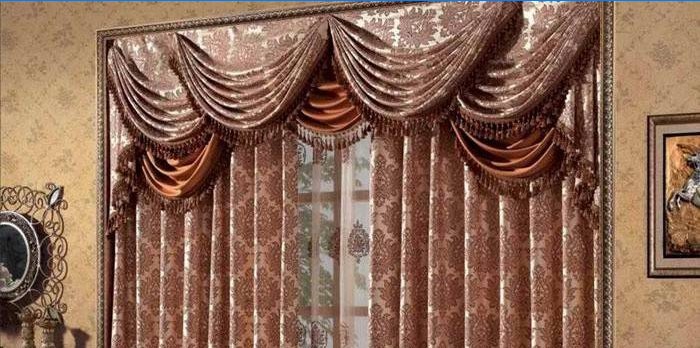
Polyester is obtained from polyamide – a plastic made on the basis of high molecular weight synthetic compounds obtained after the processing of petroleum products. As a result of certain chemical processes, polyamide is processed into polyester fibers, which are stretched to the desired strength and density. The first synthetic material was created at the end of the 19th century, and mass production of polyester began only in the 50s of the last century. Due to its unique composition, it is now very popular among consumers.
Synthetic polyester fabric – this is the best price / quality ratio. The composition of clothing or lining, in addition to polyester, as a rule, also contains other materials: acrylic, viscose, lycra, elastane, cotton, linen or wool. For curtains and home textiles, the manufacturer adds poplin or bamboo with elastane to the polyester fabric, in addition to wear resistance, the product acquires softness, shine, flowing effect.
Properties and advantages
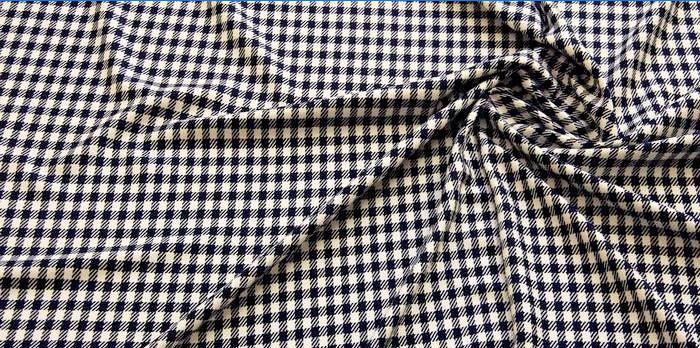
Modern synthetic materials have different shades, are worn for a long time and even after several years they maintain color saturation, as on the day of purchase. Things containing polyester are stored without the use of protective chemicals, because they are not afraid of parasites or moths. After washing, the material does not sit, and when dry, has a dirt-repellent effect.
The advantages of synthetic matter also include the possibility of any construction and design. In winter things made of polyester, it is very comfortable. Due to its density, the fabric provides the body with an optimal temperature even in severe frosts. Look in the video below which lightweight and stylish jackets can be sewn with it..
Pros and Cons of Polyester Clothing
Advantages of polyester fabric:
- durable, strong;
- resistant to fading;
- easy to clean;
- hydrophobic (does not absorb moisture);
- resistant to pellets;
- dense, heat-resistant.

Disadvantages of polyester:
- poorly breathable;
- easily electrified;
- has increased rigidity;
- paint does not penetrate the middle of the fiber.
Answers to frequently asked questions
Our modern world can not do without synthetic fabrics. We observe them everywhere, starting from clothes, ending with building materials. Previously, natural fabrics prevailed in everyday life, with which everything was clear. If the owner does not cherish and cherish a thing, then the hour is not short when it will have to be thrown into the trash because it requires special care. Now with the launch of synthetics on the market, owners of things have a lot of questions: is the polyester fabric good, and how to care for it.
Polyester – stretches or not?
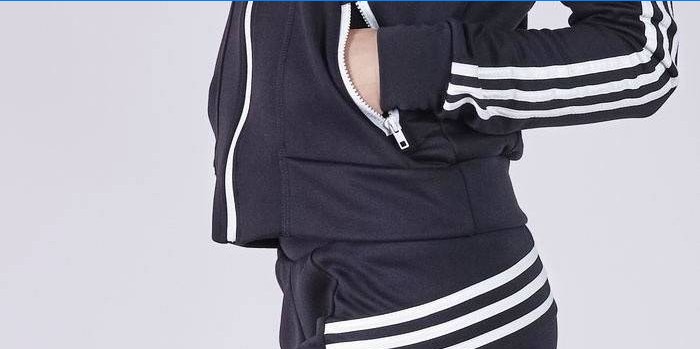
The type of polyester fabric used for sewing clothes has high functionality, durability and wear resistance. In terms of hygienic properties, such synthetics are second only to natural materials: wool, linen, cotton, far superior to nylon and nylon. The polyester stretches perfectly, which allows you to sew from it not only high-quality outerwear, but also sports, office and children’s things. Dresses with polyester added retain their original shape for a long time..
Polyester fabric – breathing or not?
When they say “breathes” about fabric, it means that it freely passes air. As for synthetic polyester, its breathability depends on which fabrics it is combined with. In its pure form, synthetics do not allow air to pass through very well, so in hot weather 100% synthetic things are not recommended to be worn. But if in the composition there are natural fabrics: cotton, linen, wool, then the thing acquires excellent breathability, and in terms of strength it surpasses clothes, which include only natural fibers.
How to remove stains on polyester fabric
Clothing containing polyester rarely causes trouble, but sometimes oily spots appear on it. To remove them from the polyester fabric, you will need a dishwashing detergent, washing powder and warm water. Use this guide:
- Dampen a greasy area with warm water.
- Apply a dishwashing detergent that has proven itself in the fight against fat.
- Rub the product thoroughly into a greasy stain.
- Leave it to soak for a few minutes, but do not let it dry..
- Wash the product using washing powder.
- Repeat the procedure if necessary..
Photo: what the polyester fabric looks like
In its pure form, synthetic polyester looks like a woolly white wool, perfectly imitating natural fibers. After adding other fibers to the composition, the fabric takes on the form and properties of the added materials. Polyester can be fluffy or smooth, shiny or matte, of different sizes and weave fibers. In the photo below you can see how different the polyester materials look like..
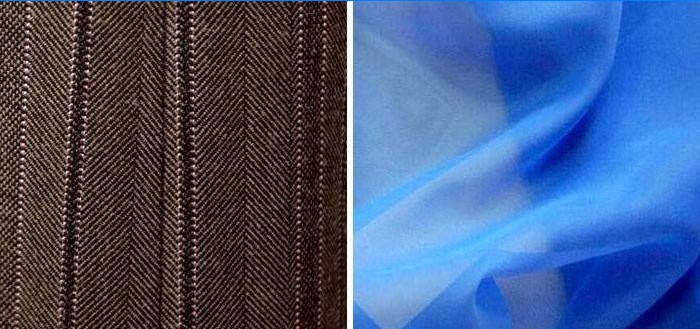
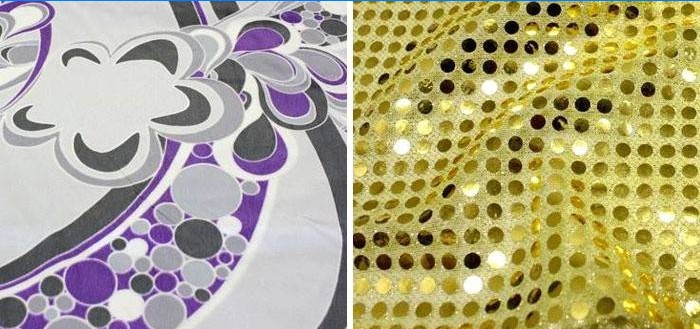

is it and what are its properties? Is it comfortable to wear? How durable is it compared to other fabrics? Can it be easily maintained and washed? What are the common uses of polyester in everyday life? Are there any environmental concerns with its production or disposal?
Polyester is a synthetic fabric made from thermoplastics that offers various properties. It is lightweight, resistant to wrinkles, and has good moisture-wicking capabilities. However, polyester tends to retain odors and can lack breathability, making it less comfortable to wear compared to natural fibers. In terms of durability, polyester is generally more resistant to wear and tear compared to other fabrics, although it may pill over time. It is also easy to maintain as it resists staining and can be machine washed.
Common uses of polyester in everyday life include clothing, bedding, curtains, and upholstery due to its affordability, wide availability, and versatility. However, the production of polyester raises environmental concerns. It is derived from non-renewable resources like petroleum, and the manufacturing process consumes significant energy and water while releasing greenhouse gases. Additionally, polyester is non-biodegradable, which poses challenges for disposal. To mitigate these concerns, recycling initiatives for polyester fabrics are being developed.
Is it and what are its properties?
Yes, quantum entanglement is a fascinating phenomenon in quantum mechanics where two particles become connected in such a way that the state of one particle instantly influences the state of the other, regardless of the distance between them. This means that if you measure one particle as spinning up, the other particle will be spinning down, for example. It’s a property that Einstein famously called “spooky action at a distance.” Quantum entanglement has been studied extensively in the field of quantum physics and has potential applications in quantum computing, cryptography, and teleportation.